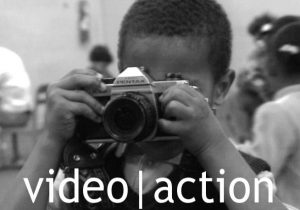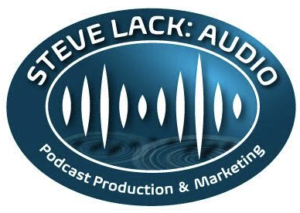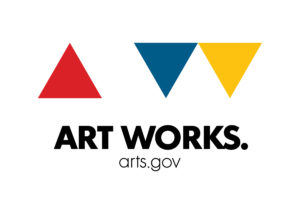Making Something Out of Nothing
Part One: Working with Words
Author: Dan Bailes, WIFV Member
Women in Film & Video is preparing to launch a new WordPress blog this year. While the new site is constructed, this new blog series by Dan Bailes will explore creativity, decision making, and problem solving in the process of fashioning videos, with a focus on client work and web videos.

In a sense it’s everyone’s worst nightmare. How do you make a three-minute web video about a star employee and his high-profile project with no footage? Here’s what happened: the producer arrived on location, ready to go. The profile subject, John, was an Iraq War vet who was now working on a program designed to pinpoint the location of individual troops on the battlefield. As he discovered during combat in Iraq, the Army had no way to track an individual troop. If that person was separated from their unit and unable to communicate, there was no way to find them.
The goal was to interview John, show him working on his project, interacting with his co-workers and anything else that could be used as visuals to tell the story. There would be no narration, so everything depended on the interview and the visuals. So far, pretty typical.
Of course the shoot had been set up carefully in advance. But as the producer was setting up, he was told that he could interview John, but that was it. No footage of what John was working on. No footage of the room where he works. It was all top secret and no, they wouldn’t mock up something, either. Nothing the producer could do would change their minds.
In desperation, after the interview, the producer shot some footage of John and two co-workers walking in a hallway. And he found an empty classroom and shot them in conversation. And that was it. Not even any exteriors of the building were allowed.
In the interview, John was pretty good. He started out more reserved, but you could feel his sincerity as he talked about the problem he was trying to address and what it meant to him to work on finding a way to keep our troops safe.
So the first effort in putting the piece together was to construct it through John’s interview. His words would create the spine. And they had to tell a story, too. So of course there would be a lot of editing, just to build the arc of the piece.
And it also had to be emotional. The theme of this profile (it was part of a series) was “Missions That Matter” and, as you can easily imagine, the piece had to make you feel the importance of what John was doing, too.
To be honest, John was like a lot of military people when interviewed, a little stiff and formal. So it would be important to find those moments when the sincerity and pride played on his face and make sure he would be on camera for those.
But how to begin the piece?

Beginnings are so important because in those first few seconds you have to hook your audience. And because the piece is so short, you’ve got to set it up so you’re curious but also oriented to what comes next. Because, in three minutes you don’t have a lot of time to develop the story. So you could say, every second counts.
The best choice in this case was to start with the problem. So this is how John’s words begin (vo):
“If you happen to go missing… your odds of survival are diminishing with each passing moment… that you’re out there in a war zone… and nobody knows where you are.”
A few things to notice. First, John’s phrases are spaced out. Those little pauses give the piece time for the words to create a little impact. Especially in the beginning. When you slow things down, you’re also leaving space for the images to work their magic.
Second, the phrases are evocative. They set the stage, create a little mystery and drama, and that’s important for these little web documentaries. The closer they are to drama, the more punch they have. And you want to build on that drama as the piece develops, hopefully leading to a punchline at the end.
So what would we want to hear next? Something personal. That would cement the sense that this is John’s story, and it would help the viewer see it all through John’s eyes.
So this is what comes next in the piece (again, John speaking vo):
“I was there when many of my fellow military members had gone missing… some of them have not been recovered yet… It’s always personal to me. Every day that I get up, I think about those people…
This is where John first comes on camera:
“And, ah, what can we do to improve that – so that we don’t have to come home without our fellow soldiers.”
At this point, we’re almost a minute into the piece and we have John’s motivation, his mission, a little of his passion and the big picture. So we’re ready to move the story along. And that will be explored in the next post of this series.

U.S. Army Spc. Jeffery Moore (left) prepares to exit an M 2 Bradley fighting vehicle at Camp Ar Ramadi, Iraq, following a raid in the Tameem district of Ramadi, Iraq, on Sept. 3, 2006. Moore is assigned to Bravo Company, 2nd Battalion, 6th Infantry Regiment, 1st Armored Division. DoD photo by Tech. Sgt. Jeremy T. Lock, U.S. Air Force. (Released)
About the Author: Dan Bailes, WIFV Member
Expert at transforming complex issues into compelling stories, Dan Bailes began his career editing film and later video. He spent 15 years creating issue advocacy and marketing media for trade associations and corporations and political media for national and state-wide campaigns for both Republican and Democratic candidates. Dan also served as executive editor and writer on a seven-part international co-production exploring the economic and cultural development of emerging Asian nations. He’s made award-winning documentaries for PBS, trade associations and educational organizations, and was co-creator, co-producer and writer for Medical Economics Video Magazine, a quarterly program on the business and practice of medicine that aired on Lifetime Television.
















